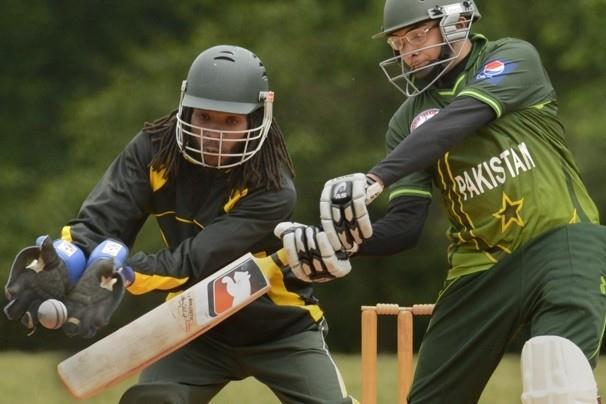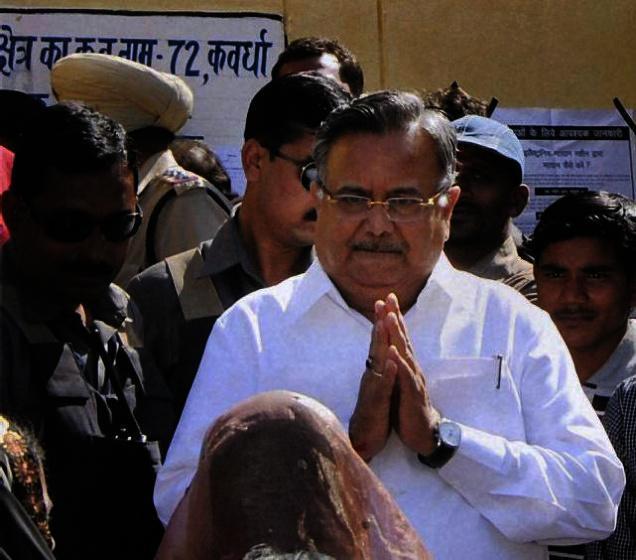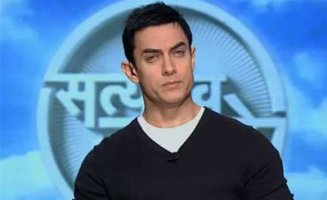May 22, 2012
With the ear-popping crack of a bat, shouts of “Shabash!” rang out on a recent Sunday afternoon at Silver Spring’s Galway Park.

Cricket in the U.S.: Alive and growing: Despite the sport being a puzzlement to most Americans, cricket has its hotbeds in certain parts of the country.
May 22, 2012
With the ear-popping crack of a bat, shouts of “Shabash!” rang out on a recent Sunday afternoon at Silver Spring’s Galway Park.

Cricket in the U.S.: Alive and growing: Despite the sport being a puzzlement to most Americans, cricket has its hotbeds in certain parts of the country.
“Shabash!” “Shabash!”
The Urdu word for “excellent,” shabash also is a term among cricket players worldwide — whether from India or Pakistan, England or Australia, Jamaica or Guyana — to cheer on outstanding batting, bowling and fielding, the game’s essential skills.
Among cricket’s stateside adherents, the most pressing goal at the moment is making Americans equally fluent in the world’s second-most popular sport, eclipsed only by soccer.
To most Americans, cricket is a puzzlement. Even savvy sports fans know little more than it’s traditionally played in white trousers, involves a flat wooden bat and lots of running back and forth. Fewer still realize it has a rich tradition in the United States; it predates by 140 years the national pastime of baseball, which is cricket’s direct descendant.
But cricket hotbeds exist — particularly in New York, Florida and California — spurred in the late 1970s by immigrants from the West Indies, which ruled the sport at the time. It was fueled anew as a wave of workers from south Asia arrived for the tech boom of the late-1980s and ’90s.
And it’s thriving in the Washington area: There are two cricket leagues that field more than 40 teams for nearly 2,000 weekend players.
“It represents the diversity that the D.C. area has,” says Rohit Kulkarni, 35, one of those weekend players who traveled the country researching a well-received documentary, “Pitch of Dreams: Cricket in America.”
According to Peter Della Penna, cricket is the country’s fastest -growing sport, with 15 million fans and an estimated 200,000 players. It can be found in all 50 states, including Nebraska, where the New Jersey native played club cricket as a Creighton undergraduate after falling in love with the sport while studying in Australia.
“It’s kind of like underground sport — a secret society — in the sense that it’s everywhere if you know where to look,” says Della Penna, 27, who is the cricket editor at ESPN. “But if you don’t know where to look, you wouldn’t know it existed.”
From the first week of April to early October, Washingtonians might spot a cricket match at West Potomac Park near the Jefferson Memorial or on makeshift pitches in Hyattsville, Oxon Hill, Reston, Manassas or Woodbridge.
But cricket isn’t played exclusively by expatriates longing for home. American University and George Washington University field club teams. And some of its more enthusiastic converts can be found at Bowie’s Whitehall Elementary School, where third-, fourth- and fifth-graders play with scaled-down plastic bats, balls and wickets and delight in explaining the rules to their parents.
Baseball without the boring parts is just one way youngsters describe cricket.
“It’s very fun,” says Sofia Hired, 10. “You get to bat. You get to pitch. And you get to run around.”
The equipment was donated to Whitehall’s gym teacher, Jonathan Jones, after he attended a workshop staged by the U.S. Youth Cricket Association, based in Glen Burnie.
The end game is to create a pipeline for a next generation U.S. National Cricket Team that could contend for a World Cup. But first, cricket advocates say, the country needs to construct proper cricket fields (which require two or three acres of open space), organize youth leagues, cultivate the NCAA’s endorsement (complete with college scholarships) and launch a U.S.-based professional league.
“Look at soccer!” says Avinash Varma, president of the Washington Metropolitan Cricket Board. “It has still taken 40 years since Pele and the New York Cosmos, but soccer is gaining in popularity. To grow, cricket must take a leaf out of the playbook of U.S. soccer. That is the playbook!”
Everyone can play it’
Though steeped in tradition and played primarily in former British colonies, cricket has played a significant role as a vehicle for political and cultural transformation, as well.
As documented by Stevan Riley’s documentary “Fire in Babylon,” the sport was revolutionized by the West Indies teams of the late-1970s and 1980s. The teams were forged of players from Trinidad and Tobago, Barbados, Jamaica and elsewhere in the Caribbean; they brought fearless power and unprecedented pace to the game. Their ascendance as a global power paved the way for the region to shake off the vestiges of colonialism and assert a genuine independence.
Cricket also has bridged cultural, ethnic and political divides throughout the world.
“This is the only thing that brings India and Pakistan together,” says Tarik Hussein, 38, who travels from his home in Charlestown, W.Va., each weekend to play for the Washington Tigers, among the more decorated teams in the Washington Cricket League.
Jones, 27, the physical education instructor, confesses that he often confused cricket with croquet before attending the teaching workshop, eager to expose Whitehall’s students to a new activity and lured by the promise of free equipment.
He loved what he found: A sport that was similar to baseball but demanded far more activity, gave children of all sizes and ability a better chance of hitting the ball and rewarded teamwork and sportsmanship.
Jones introduces cricket to students by showing a video of adults playing the game, pointing out the similarities and differences with baseball along the way.
In children’s cricket, bowlers pitch under-handed rather than overhand, which makes the ball easier to hit. And at Whitehall, Jones adds up-tempo music, pausing the tape periodically to quiz students on the score, suggest a slight grip change for batters who are whiffing and praise all that the children do well.
“They love the activity level,” Jones explains later. “Seeing boys and girls playing together and all at different skill levels, it should be fun!”
Cricket isn’t terribly different at the club level, demanding cooperation, teamwork, discipline and far more skill than brawn.
“Anyone and everyone can play it,” says Kulkarni, the “Pitch of Dreams” filmmaker. “You don’t need a certain body type. It’s not like football or basketball, where you need to have certain physical aspects. You can be very lean or very short. In fact, you can have a pot belly and still be a good cricket player.”
Hurdles to clear
In Washington, the Tigers are typically at the top of the standings. They boast bowler Imran Awan, 32, of Ashburn, a veteran of the U.S. national team and the Tigers’ longtime captain; Brooklyn’s Akeem Dodson, 24, also a national team member; and a deep roster of skilled players from cricket-playing nations all over the world.
“We’re not just a one zip-code team,” says Awan, who, like many of his teammates, pays an extra $80 a month for myriad cricket channels on cable television. He’ll stay up to 2 a.m. to watch compelling matches (South Africa is his favorite team) and each morning checks his phone app for cricket scores even before making coffee.
His face shielded by a floppy sun hat, Awan is clearly the Tigers’ leader when the team gathers for the season’s first practice in Silver Spring, a session devoted to evaluating the young players vying for a spot in the lineup. He bowls a bit, then switches to fielding, directing the spacing among his teammates facing batters from the Embassy of Pakistan.
Among the country’s better fast bowlers, hurling the hard leather cricket ball at nearly 100 mph in his prime, Awan manages a top speed of 90 mph now but happily, as in many sports, cricket-smarts improve with age.
“I think in my mind I’m still in the best shape of my life,” Awan says. “I wish I could take back the days.”
In a sense, weekend cricket transports him to those days, as it takes many Washingtonians back to childhood games in India and Pakistan. For Dodson, the memories are of Georgetown, Guyana, where as a schoolboy he dreamed of playing for the West Indies national team.
“My mother said I used to bat with her slipper as a baby,” Dodson said.
But for cricket to rise above nostalgia for a few Americans and became a genuine passion among many, it must clear multiple hurdles.
The sport’s governing body, the United States of America Cricket Association, has been fraught with infighting for years.
Pitches are scarce, as are the corporate sponsors that spend so freely in the Indian Premier League and elsewhere overseas.
Post-Sept. 11, 2001 politics have made it difficult for students from cricket-playing powers to get visas to study in the United States, crimping a potential source of talented players. And those with plans to relocate permanently face a long wait for citizenship, a requirement for being named to the U.S. national team.
Without success on an international stage or an established pipeline for cultivating homegrown bowlers and batters, it’s doubtful that cricket or shabash will become part of the American vernacular soon.
Then again, with some matches stretching eight hours or even over several days, patience is a virtue in cricket.
Source: Washington Post (By Liz Clarke)
















































































































